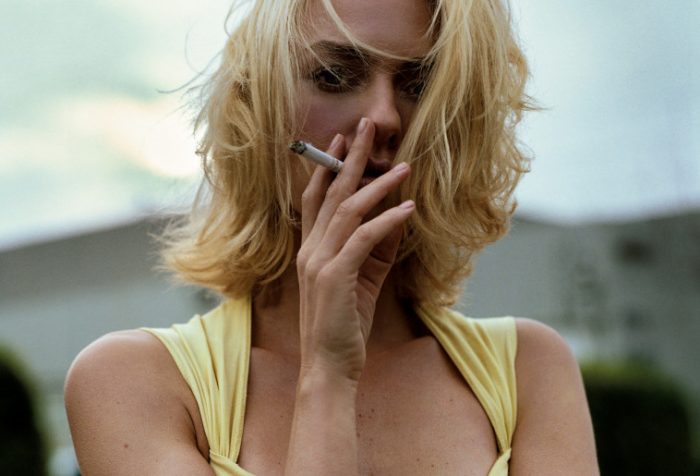How do we rebuild ourselves? What happens in the process and why we do it?
There’s a word that I love: resilience.
And a few days ago, my therapist told me that the ways we fill a void is what makes us resilient. I loved that.
Every wound is here to shape us.
As humans, there’s a part of our story that has created and touched the most intense wounds we have, such as the abandonment wound. And I believe these wounds, and the void that is created by them, is what shapes the person we become.
Because we choose what to fill it with and how to heal it.
Today, I can say it is a gift, but it has been a long journey to rebuild myself, to be able to reparent myself, and to find ways of getting self-nourishment and emotional self-love.
Just like many of us, I learned through my relationships how I was trying to satisfy a need that came from a lack of attention and care from my parents when I was a little girl.
While growing up, I’ve needed to discover ways to heal, what was good, wrong, and how to set boundaries—the hard way. My parents have their own stories and were not able to give me the support I needed and satisfy my deepest cravings when I needed it most. So, for a long time, the lack of boundaries meant not knowing I could say “no” or “yes.”
It was like a sense of being “taken” by life and whatever happened, I needed to accept.
Unrecognized self-abandonment is something hard to see and accept. But as soon as we are able to see it, a new life can begin.
The main purpose of this article is not to blame, but instead to help us identify how we have coped with our stories and the gifts they have become—the gift we have become.
There are many ways in which we can discover this, and one of the greatest ways is through therapy. But also by witnessing someone else’s life who has a different story than our own, so that we can show our minds and hearts that a different way of living is possible.
We need to ask ourselves how we have healed our pain and filled that emptiness caused by abandonment, rejection, or any other wound. Because to experience the healing honey from the pollen of the flower we have nourished is one of the most satisfying practices we can gift ourselves with.
“The flower we have nourished” is ourselves: the purpose we have given to our actions, steps, and decisions to behave in our relationships.
Connecting the dots.
There comes a point in our lives when what used to hurt us no longer moves us to the point of victimhood. And this point will be key for us to witness the resilience we’ve developed and the person we’ve shaped ourselves into since we were little.
From our early on, our imagination and ability to fantasize have been here for us; the process of growing up and getting rid of the veils that were protecting us will transform us into the person we’ve been creating/becoming.
Which fantasies and in which ways did you use your imagination when you were little so that you could fill something that was missing?
This is resilience.
We will know we’ve come to that point—a new story; no longer carrying the past—because of the ways in which we respond to a situation that would usually “freak us out.”
This doesn’t mean answering in a healthy, responsible, and self-protecting way will be easy. Because it means we will let go of a part of ourselves we are used to living with and by. And even though growth feels intense in the beginning, the gratification and space for something new to come will be instant.
So we need to allow all feelings to come.
We need to trust that there’s a greater story waiting to be written.
A story that truly goes with the “rebuilt” self.
The guilt of saying no and setting boundaries.
If we believe in life’s perfect timing, we know that there’s no situation sent to us by coincidence. There’s a reason why we meet who we meet, and there’s a reason why things happen in our lives.
But if we’ve been a person who says “yes” to everything and everyone, as soon as we begin to say no and do things differently, it’s probable that we’ll feel guilty because of how others react and because this is something new for us.
But let us remember this: in order for our story to change, we need to change the story. And there’s no way that we will build and attract healthy relationships if we don’t set our boundaries.
Grieving process.
As soon as we do it—put the change and growth into action—we must know that there will be a grieving process.
For we are not only saying goodbye to an old part of ourselves, but also to some of the people around us who will not be able to cope with the new version we’ve shaped ourselves to be and, therefore, they won’t continue to be part of this new life.
And that’s okay.
It’s part of the process.
We must take our time to grieve.
So, what next?
A sense of freedom, a sense of worthiness, new results:
“It’s unknown because I’ve never done it. It’s beautiful because I’m being true to myself. It’s greater than I can imagine because whether I recognize it or not, my standards are higher than before.”
Our unique ways of healing are not only needed for our story to get even better, but they are also needed because we will become an inspiration for the people who will cross our paths. And then we’ll have a sense of purpose more than ever before in our lives.
So let us go back into our memories; may we be brave to look into the past, and see the way we have protected and saved ourselves. Because this is our story. This is our resilience.
~











Read 0 comments and reply